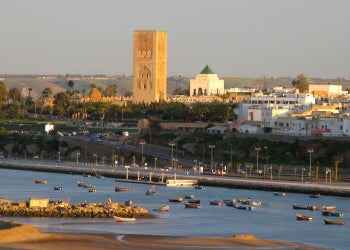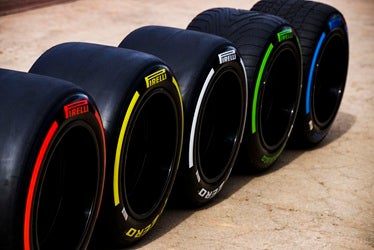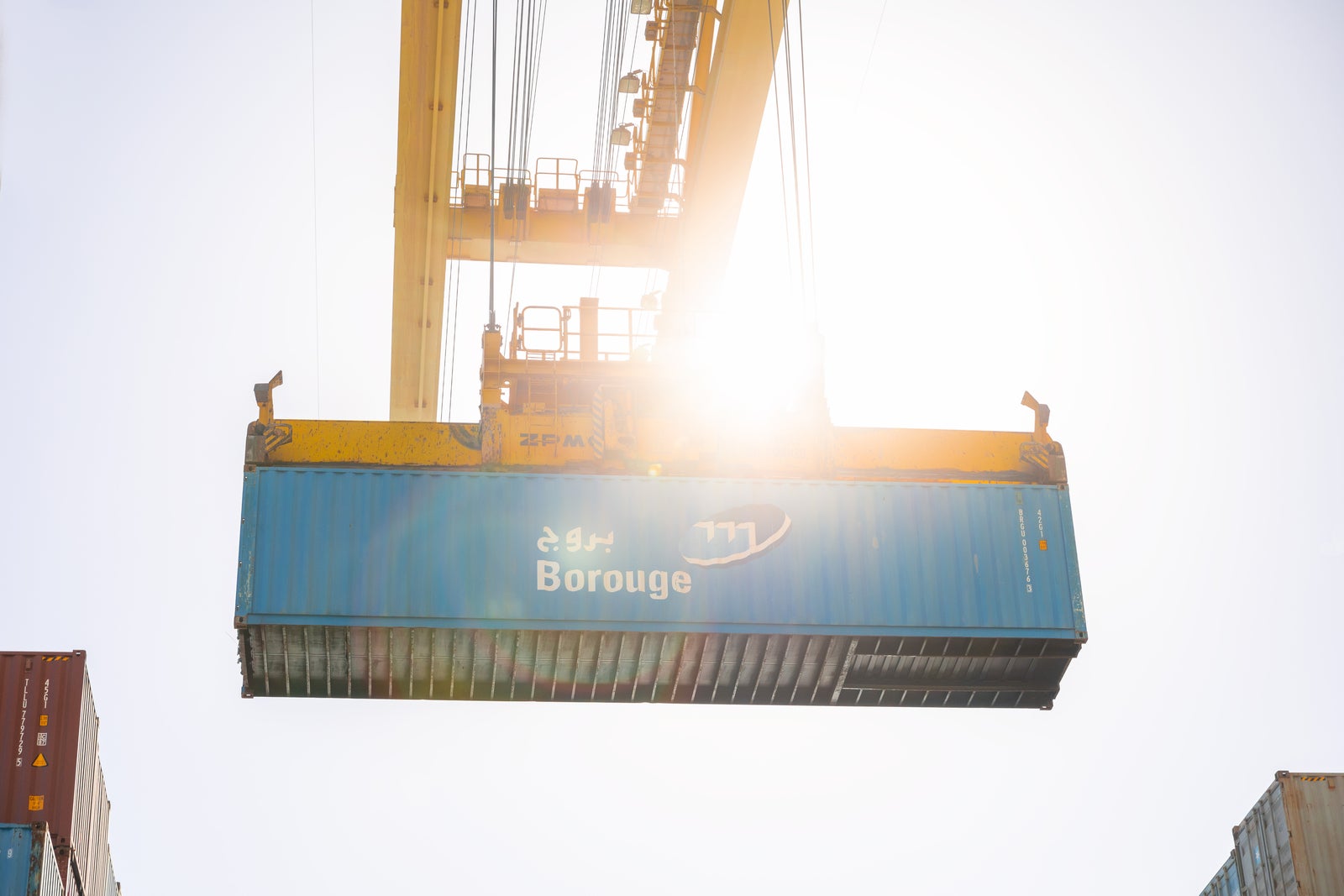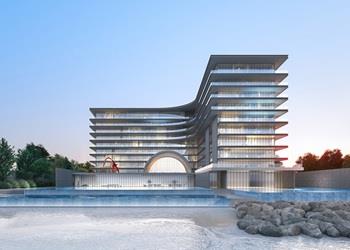Resurging projects uplift UAE and Saudi economies
29 January 2024

The UAE and Saudi Arabia are almost neck-and-neck – with the UAE marginally in the lead – at the top of the MEED Economic Activity Index, which assesses the near-term economic health of regional markets.
In October 2023, both countries were forecast by the Washington-based IMF to grow at a region-beating rate of 4% in real GDP terms in 2024, though without taking into account the deepening of voluntary oil production cuts in November by half a dozen Opec+ countries, among them Saudi Arabia and the UAE.
In the Q4 Opec+ meeting, in addition to the voluntary cuts announced in April 2023 and extended until the end of 2024, Saudi Arabia and the UAE agreed to cut their oil production by a further 1 million barrels a day (b/d) and 163,000 b/d, respectively, until the end of Q1 2024.
The impact of these additional cuts, as well as the trailing of the oil price below the IMF’s forecast of $79.9 a barrel in 2024, remains to be seen, but – other factors notwithstanding – it should be negative.
In spite of this, some think tanks and ratings agencies have given both countries even more bullish real GDP projections since the start of the year. Aljazira Capital has forecast a 4.4% real GDP growth figure for Saudi Arabia in 2024 and ratings agency Moody’s has projected an even higher 4.6% growth rate.
Aljazira Capital stated that weaker oil revenues “would be offset by growth in non-oil revenues” from the private sector amid the implementation of non-oil spending programmes under Saudi Vision 2030.
For the UAE, ratings agency Standard and Poor’s (S&P) meanwhile forecast 5% growth in 2024 – also driven by the non-oil sector, which grew by 6% in 2023, led by hospitality, retail and financial services.
Beyond the headline figures, both countries are keeping their inflation and fiscal balance in check and have relatively contained unemployment levels. However, Saudi Arabia’s figures of 5.6% unemployment and 23.8% youth unemployment both remain well above average for the GCC countries.
Projects boom
Both countries have also seen a surge in projects activity. Together, they were responsible for the bulk of the $253bn in contracts that made 2023 a record year for regional project activity.
In Saudi Arabia, the total awards value for the year was 59% higher, rising to $95bn – double the long-term average value of project awards over the preceding 10 years. New work also outstripped project completions by a ratio of almost four to one, adding $70bn to the net value of projects under execution.
In the UAE, the value of project awards leapt by 175% to hit $81.5bn – a value almost close to double the long-term average. Significant project completions worth more than $48bn nevertheless weighed on the market and reduced the net change in the value of projects under execution to $33bn.
Other markets
The other GCC countries have mixed outlooks, with varying growth forecasts and projects market activity.
Qatar has a modest 2.2% growth projection for 2024 and has maintained recent project awards at a level matching the rate of completion of legacy projects, as well as the long-term award value average.
Kuwait’s economy was given a 2024 growth forecast of 3.6% by the IMF in October, after contracting in 2023, but this does not include the voluntary production cuts announced in November. The country’s projects market meanwhile continues to slip, with its 2023 awards sitting at just 76% of its average.
The revision of Oman’s 2024 growth forecast by the IMF in January provides a glimpse into the impact of the additional voluntary oil production cuts announced in November for Q1, with the country’s real GDP growth projection for the year having been revised down markedly from 2.7% to 1.4%. The country’s projects market is nevertheless largely holding its own, with its 2023 contract awards clocking in at 88% of the long-term average, even as completions slightly exceeded new awards.
Bahrain continues to struggle with a persistent fiscal deficit and deepening debt, and the squeezing of the country’s cash flow is being reflected in its sinking projects market. The $1.2bn in awards in 2023 flagged 32% behind completions and 65% below the market’s long-term average.
Morocco has increasingly emerged as one of the least troubled markets in the wider Middle East and North Africa region, with a solid 3.6% growth projection for its largely non-hydrocarbons economy. Inflation in the country has also been curbed and the $2.4bn in project awards in 2023 exceeded completions by 24%, despite dipping below the long-term average.
Egypt is heading into 2024 facing severe economic headwinds, with high inflation amid falling foreign exchange reserves and the looming prospect of a further currency devaluation, short of an IMF bailout. The country’s mounting fiscal trouble has been reflected by falling projects activity, with the $12.6bn in awards in 2023 being both below the level of completions and 44% below the long-term average.
Tunisia has a forecast of just 1.9% real GDP growth, but an unexpected burst of $1.5bn in project awards in 2023 boosted projects activity – with the value nearly double both completions and average awards.
Algeria, Iraq and Jordan face various headwinds, but chief among their problems is that their middling growth rates are insufficient to accommodate either their rising debt or double-digit unemployment. All three countries also had projects markets that underperformed in 2023, with award values below both the level of completions and long-term averages.
Exclusive from Meed
-
 Pursuit of political stability dominates Maghreb
Pursuit of political stability dominates Maghreb11 July 2025
-
 Frontrunner emerges for Saudi Pirelli tyre plant
Frontrunner emerges for Saudi Pirelli tyre plant11 July 2025
-
 Borouge extends bid deadline for butene-1 expansion
Borouge extends bid deadline for butene-1 expansion11 July 2025
-
 Hilton signs hotel agreement in Medina
Hilton signs hotel agreement in Medina11 July 2025
-
 Chinese firm wins Armani Beach Residences deal
Chinese firm wins Armani Beach Residences deal11 July 2025
All of this is only 1% of what MEED.com has to offer
Subscribe now and unlock all the 153,671 articles on MEED.com
- All the latest news, data, and market intelligence across MENA at your fingerprints
- First-hand updates and inside information on projects, clients and competitors that matter to you
- 20 years' archive of information, data, and news for you to access at your convenience
- Strategize to succeed and minimise risks with timely analysis of current and future market trends

Related Articles
-
 Pursuit of political stability dominates Maghreb
Pursuit of political stability dominates Maghreb11 July 2025

Across the Maghreb, amid a range of external and internal pressures, the pursuit of political stability is emerging as the overarching preoccupation for governments as they compete for trade, growth and investor interest.
Wracked by drought, years of disruption due to Covid-19 and the impact of the war in Ukraine on grain prices, and now facing the boot of arbitrary US tariffs, the economies of the region need certainty more than anything.
With fast-growing populations, all of the Maghreb countries face serious challenges in maintaining sufficient job creation to cater to their youth, and with local spending constraints, attracting foreign investment is key.
None of the Maghreb countries seem to understand this better than Morocco, which has been rolling out what might be described as a GCC-style vision for the country. Most recently, in September 2024, it launched the Digital Morocco 2030 strategy to use artificial intelligence to improve access to services in rural and underserved areas.
Such initiatives are central to Morocco’s broader New Development Model (NDM) strategy, first laid out in 2021 and recognised by bodies such as the Washington-based IMF as a key driver of economic transformation in the country. Key indicators for the NDM include doubling the country’s GDP per capita to $16,000 by 2035, doubling the rate of women in the workforce, raising renewables to 40% of total energy consumption and developing the digital sector to account for 5% of GDP.
Rabat is also widening the country’s social security net, having expanded family allowances in 2023, and with plans to expand old-age pensions and unemployment benefits in 2025. The government is also improving access to services for Amazigh speakers in answer to loud political calls since the 2016-17 Amazigh-led Hirak Rif movement protests.
From creating jobs to supporting vulnerable groups and minorities, the common thread in Rabat’s domestic policy is expediting measures to address emerging risks to social and political stability at source.
Externally, Morocco has meanwhile intensified its diplomatic campaign for international recognition of its semi-autonomy plan for Western Sahara. First proposed in 2007, the scheme initially received little traction, but the situation changed significantly in 2020 with then US President Donald Trump’s recognition of Moroccan sovereignty over the territory as part of a deal to normalise ties with Israel. In 2022, Spain also shifted its stance to one of support for Rabat’s autonomy plan, followed by France in early 2024 and by the UK in June 2025 – each country for their own reasons.
The fresh support is a diplomatic sea change for Morocco after 30 years of across-the-board rejection of its claims to the territory and calls for Sahrawi self-determination. It also boosts Rabat’s effort to secure more foreign direct investment (FDI) into Western Sahara and local projects, such as the Morocco-UK XLinks energy initiative.
For Madrid, the recognition also resolves a point of contention between the two neighbours, particularly ahead of the pending co-hosting of the 2030 Fifa World Cup by Morocco, Spain and Portugal.
Advances in Algiers
Across the border in Algeria, the wheels of legislative change have also been slowly turning, with new hydrocarbons and investment laws, accompanied by the lifting of some restrictions on foreign ownership, raising the possibility of boosting inbound FDI.
The government is also emphasising private sector-led growth and the rationalising of public spending, as well as initiatives to improve the business environment by reforming public banks and state-owned enterprises.
President Abdelmadjid Tebboune secured his re-election for a second term in September 2024 with the support of 84.3% of the vote, in a reassuring referendum on the political stability of the country’s post-Bouteflika political order.
Although the country’s politics remain marred by the suppression of the opposition, the broader shake-up in government is reflected in the ongoing reforms and demonstrates the country’s political awareness of the need to deliver.
In a mirror image of Morocco’s diplomatic journey, Algiers has worsening foreign relations with Paris and Madrid due to its staunch opposition to the Western recognition of Moroccan claims to the Western Sahara region.
In May 2025, Algeria expelled 15 French diplomatic agents, citing their “irregular positions” on the geopolitical issue. The incident matched similarly negative responses by Algeria to Spain in 2022.
Trouble in Tripoli
Libya remains deeply mired in the political deadlock between its two administrations – even as the years of rivalry between the administration has made it clear to all involved of the need for reunification for the stability of the country.
Talks to establish a unified interim government and hold national elections have stalled over the past year, however, with armed clashes between rival militias in Tripoli in May 2025 only reaffirming the precarious state of affairs in the country.
The UN remains central to Libya’s peace process, and in early 2025, the UN appointed Hanna Tetteh as the Special Representative for Libya, while a 20-member Libyan Advisory Committee was established to address contentions over the proposed electoral process.
In May, the committee then outlined some potential solutions, but political consensus remains elusive, leaving little near-term hope for a resolution to the situation in the country.
Turbulence in Tunisia
Tunisia, meanwhile, faces issues stemming largely from political instability inflicted upon it under President Kais Saied, who has ruled by decree since dissolving the country’s parliament in 2021. In March 2025, Saied dismissed his third prime minister in less than two years and appointed Sara Zaafarani in their place.
Saied was re-elected in an October 2024 election with over 90% of the vote, but the process was marred by both low turnout and the arrest of several opposition figures.
Tunis, under Saied’s leadership, is the exception to the rule amid the Maghreb's pursuit of greater political stability. One rare area of success for the president has been in extracting financial support out of the EU in exchange for curbing trans-Mediterranean migration routes emanating from Tunisia.
More broadly, however, Tunisia’s deepening economic challenges, low growth and deteriorating public services under the watch of Saied’s autocratic political experiment serve to underline how the region’s most viable route to economic prosperity remains through providing the kind of political stability in which investors can trust.
The region’s need for trade and growth-boosting policies will only be emphasised from 1 August, when Trump’s pledge for tariffs of 30% on Algeria and Libya, 25% on Tunisia and 20% on Morocco comes due.
While the US only reflects a small fraction of the outbound trade of each of these countries, further dents to growth are something that the region can ill-afford. Here, too, political stability may be key in enabling the respective powers that be to make diplomatic overtures compelling enough to entice Trump to back down.
MEED’s August 2025 report on the Maghreb also includes:
> ECONOMY: Maghreb economies battle trading headwinds
> LIBYA OIL: Oil company interest in Libya increases
> ALGERIA INDUSTRY: Algeria’s industrial strategy builds momentum
> POWER & WATER: Slow year for Maghreb power and water awards
> CONSTRUCTION: World Cup 2030 galvanises Morocco constructionhttps://image.digitalinsightresearch.in/uploads/NewsArticle/14248342/main.jpg -
 Borouge extends bid deadline for butene-1 expansion
Borouge extends bid deadline for butene-1 expansion11 July 2025

Abu Dhabi petrochemicals producer Borouge has extended the deadline for contractors to submit bids for a project to increase production of butene-1 from the olefins conversion unit (OCU) at its Borouge 2 plant.
Borouge aims to produce 60,000 tonnes a year (t/y) of butene-1 from the existing fractionator column, while limiting propylene production from the OCU to 500,000 t/y.
The company intends to achieve the target through the addition of co-monomer production technology and selective hydrogenation units, while maintaining the current design operation of 752,000 t/y of propylene and 39,000 t/y of butene-1, along with increasing storage capacity for butene-1 by converting N1 mixed butane spheres to butene-1-specific units.
Borouge has extended the deadline for contractors to submit technical bids for engineering, procurement and construction (EPC) works on the project to 4 August from 11 July, according to sources.
MEED previously reported that Borouge had organised a site visit for bidders for the butene-1 capacity enhancement project on 25 June.
The following contractors, among others, are understood to be bidding for the butene-1 capacity enhancement project:
- Descon Engineering (Pakistan)
- Galfar Emirates (UAE branch of Oman’s Galfar Engineering & Construction)
- Target Engineering Construction (UAE)
Borouge issued the main EPC tender for the butene-1 capacity enhancement project on 4 June, and set an initial deadline of 23 June for submission of technical bids.
Borouge issued an advanced request for tender in May.
Borouge previously awarded US-based Lummus Technology a contract to develop the process design package for the new co-monomer production technology unit, as a licensor of OCU.
Lummus, in turn, sub-contracted the extended process design package and basic engineering works on the project to South Korea’s Samsung E&A.
Borouge plans to award the main EPC contract for the butene-1 capacity enhancement project in the first quarter of 2026.
Butene-1 is a colourless gas mainly used in the production of high-quality plastics such as polyethylene and poly(1-butene). Important applications of Butene-1 are in packaging materials such as films, bags and food packaging.
ALSO READ: Borouge awards output capacity expansion contracts
Borouge entered operations in 2001, with a production capacity of 450,000 t/y of polyethylene. The Borouge 2 and Borouge 3 expansion projects took the capacity to 2 million t/y and 4.5 million t/y of polyethylene and polypropylene in 2010 and 2014, respectively.
When the under-construction Borouge 4 complex enters operations, Borouge’s overall production capacity will increase significantly from 5 million t/y to 6.4 million t/y, making it the world’s largest single-site polyolefins facility.
The upcoming Borouge 4 polyolefins complex will feature two polyethylene plants – each with a capacity of 700,000 t/y – using the third generation of Borealis Borstar technology. An ethane cracker will supply these plants with a capacity of more than 1.5 million t/y of ethylene, as well as associated ethylene derivatives.
Following the signing of a final investment decision agreement worth $6.2bn by Adnoc and Borealis in November 2021, Borouge awarded the main EPC contracts for the Borouge 4 project in December of that year.
The EPC packages, the winning contractors, their estimated contract values and a brief scope of work are as follows:
- Early works (package one) – Al-Asab General Transport & Contracting (UAE) – site preparation and early civil works
- Ethane cracker (package two) – Technip Energies (France)/Target Engineering (UAE) – $1.58bn – building an ethane cracker with a manufacturing capacity of 1.5 million t/y of ethylene
- Polymers production (package three) – Tecnimont (Italy) – $1.35bn – building two new polyethylene manufacturing plants and a unit to produce 1-hexene, a component in the production of high-performance polyethylene
- Utilities and offsites (package four) – Tecnimont (Italy) – $1.5bn – constructing non-process buildings, roads, infrastructure, internal and external interfaces, tankage systems, flaring systems and utilities, as well as integration of Borouge 4 with the existing facilities
- Second cross-linkable-polyethylene (XLPE) plant (package five) – Tecnimont (Italy) – $350m – building an XLPE plant with a capacity of 100,000 t/y.
Italian contractor Maire Tecnimont executed the front-end engineering and design works for Borouge 4.
Borouge awarded France-based Axens a contract to provide licensed technologies in January 2020. This covered supplying a methyl tertiary butyl ether unit coupled with a 1-butene production unit and 1-hexene unit for the project.
The new Borouge 4 facility will cover an area equivalent to almost 500 football pitches, or more than three times the size of Al-Maryah Island in Abu Dhabi. It will produce enough polyolefins annually to make pipes to supply water to 35 million households.
Borouge Group International
Borouge is the petrochemicals-producing joint venture of Abu Dhabi National Oil Company (Adnoc) and Austrian energy company Borealis. Adnoc owns the majority 56% stake in Borouge, with Borealis holding a 34% stake. The remaining 10% of shares in Borouge trade on the Abu Dhabi Securities Exchange following an initial public offering in June 2022, from which Adnoc Group earned proceeds of $2bn.
In March, Adnoc and Austrian energy company OMV entered into a binding framework agreement to combine their shareholdings in Borouge and Borealis and take control of a greater share of the global chemicals market.
Adnoc has also entered into a share purchase agreement with Canada-based Nova Chemicals Holdings, an indirectly wholly-owned company of Abu Dhabi’s sovereign wealth institution Mubadala Investment Company, for 100% of Nova Chemicals Corporation (Nova).
Adnoc and OMV have also agreed that upon completion of the planned merger of Borouge and Borealis, the new entity – which will be known as Borouge Group International – will acquire Nova for $13.4bn including debt, further expanding its footprint in North America.
Borouge Group International is intended to be headquartered and domiciled in Austria, with regional headquarters in the UAE. In addition, Borouge Group International will hold corporate hubs in Canada’s Calgary, Pittsburgh in the US and Singapore.
The combination of Borouge and Borealis, and the acquisition of Nova, is expected to be completed in the first quarter of 2026, subject to regulatory approvals and other customary conditions, Adnoc said.
The acquisition, together with the contribution of the upcoming Borouge 4 petrochemicals project in Abu Dhabi, will create a major polyolefins producer valued at over $60bn. It will be the world’s fourth-largest by nameplate production, with a potential of 13.6 million metric t/y across 62 plants globally.
ALSO READ: Borouge awards $531m contract to Adnoc Logistics & Services
https://image.digitalinsightresearch.in/uploads/NewsArticle/14249332/main1841.jpg -
 Frontrunner emerges for Saudi Pirelli tyre plant
Frontrunner emerges for Saudi Pirelli tyre plant11 July 2025

Saudi Amana, the local branch of UAE-based Group Amana, has emerged as the frontrunner for a contract to build a Pirelli tyre manufacturing plant in King Abdullah Economic City (KAEC).
MEED understands that the contract is being finalised and is expected to be signed within the next few weeks.
The tender notice was issued in December last year, and firms submitted their final offers in April.
The project is being developed by Saudi Arabia’s Mena Tyre Company, which is a joint venture of Saudi sovereign wealth vehicle the Public Investment Fund (PIF) and Italian tyre maker Pirelli Tyre.
The PIF holds a 75% stake in the venture, with Pirelli holding the remaining 25%.
The plant is expected to start production in 2026. It will make tyres for passenger vehicles under the Pirelli brand. It will also manufacture and market tyres under a new local brand targeting the domestic and regional markets.
The plant is expected to have the capacity to produce 3.5 million tyres a year.
MEED exclusively reported in March that the PIF and Pirelli Tyre had tendered the contract to build the estimated $550m tyre manufacturing plant in KAEC.
UK-based firm Jones Lang LaSalle is the project consultant.
The project is located within the King Salman Automotive Cluster of KAEC, which was officially announced on 6 February by Saudi Arabia’s Crown Prince Mohammed Bin Salman Al-Saud.
The move was part of the kingdom’s push to become a dominant player in the Gulf’s automotive sector. Recent years have seen investment in infrastructure, supply chain development and research to attract global automakers to Saudi Arabia and create an ecosystem for electric vehicle (EV) production – driven by the Saudi Vision 2030 mandate to diversify the economy.
The cluster is expected to be a major contributor to the National Industrial Development and Logistics Programme (NIDLP), which aims to develop high-growth sectors locally and attract foreign investment.
Several schemes supporting the NIDLP have made significant progress in recent years, including multibillion-dollar EV manufacturing plants backed by the PIF, such as assembly facilities for US-based Lucid Motors and Ceer, the kingdom’s first homegrown EV brand, launched by the PIF in collaboration with Taiwan’s Foxconn.
These facilities are supported by the National Automotive & Mobility Investment Company (Tasaru Mobility Investments), which the PIF established in 2023 to develop the kingdom’s local supply chain capabilities for the automotive and mobility industries.
The PIF has signed several agreements with international companies, including South Korean car maker Hyundai, to establish production facilities in KAEC’s automotive cluster.
 READ THE JULY 2025 MEED BUSINESS REVIEW – click here to view PDF
READ THE JULY 2025 MEED BUSINESS REVIEW – click here to view PDFUAE and Turkiye expand business links; Renewed hope lies on the horizon for trouble-beset Levant region; Gulf real estate momentum continues even as concerns emerge
Distributed to senior decision-makers in the region and around the world, the July 2025 edition of MEED Business Review includes:
> AGENDA: UAE-Turkiye trade gains momentum> INTERVIEW 1: Building on UAE-Turkiye trade> INTERVIEW 2: Turkiye's Kalyon goes global> INTERVIEW 3: Strengthening UAE-Turkiye financial links> INTERVIEW 4: Turkish Airlines plans further growth> CURRENT AFFAIRS: Middle East tensions could reduce gas investments> GCC REAL ESTATE: Gulf real estate faces a more nuanced reality> PROJECTS MARKET: GCC projects market collapses> INTERVIEW 5: Hassan Allam eyes role in Saudi Arabia’s transformation> INTERVIEW 6: Aseer region seeks new investments for Saudi Arabia> LEADERSHIP: Nuclear power makes a global comeback> LEVANT MARKET FOCUS: Levant states wrestle regional pressures> GULF PROJECTS INDEX: Gulf projects index continues climb> CONTRACT AWARDS: Mena contract award activity remains subdued> ECONOMIC DATA: Data drives regional projects> OPINION: A farcical tragedy that no one can endTo see previous issues of MEED Business Review, please click herehttps://image.digitalinsightresearch.in/uploads/NewsArticle/14249219/main.jpg -
 Hilton signs hotel agreement in Medina
Hilton signs hotel agreement in Medina11 July 2025
US-based hotel operator Hilton Hotels & Resorts has announced the signing of Diyar Ajwa, Tapestry Collection by Hilton, in partnership with local firm Al-Musbah Group.
The hotel, which is expected to open later this year, marks the debut of the Tapestry Collection brand in Saudi Arabia.
The project is located north of the central Haram area in Medina and offers direct access to the holy mosque in Medina.
In an official statement, Hilton said that it currently operates 20 hotels across the kingdom. It has a further 77 properties in the pipeline.
In March last year, Saudi Arabia’s Dan Company, which is backed by Saudi sovereign wealth vehicle the Public Investment Fund (PIF), signed an agreement with Hilton Hotels & Resorts. Under the agreement, Hilton will operate three resorts at Dan Company’s Palm One project in Al-Ahsa.
Most recently, Hilton signed an agreement with another PIF-backed firm, Ardara, to operate a Waldorf Astoria hotel within the Alwadi development in Abha province.
According to UK-based analytics firm GlobalData, the construction industry in Saudi Arabia is expected to grow by 4% in real terms in 2025, before recording an annual average growth of 5.4% from 2026 to 2029.
The commercial construction sector is expected to grow by 3.7% in real terms in 2025, before registering an annual average growth rate of 3.7% between 2026 and 2029, supported by investments in the construction of hotels, data centres and stadiums.
 READ THE JULY 2025 MEED BUSINESS REVIEW – click here to view PDF
READ THE JULY 2025 MEED BUSINESS REVIEW – click here to view PDFUAE and Turkiye expand business links; Renewed hope lies on the horizon for trouble-beset Levant region; Gulf real estate momentum continues even as concerns emerge
Distributed to senior decision-makers in the region and around the world, the July 2025 edition of MEED Business Review includes:
> AGENDA: UAE-Turkiye trade gains momentum> INTERVIEW 1: Building on UAE-Turkiye trade> INTERVIEW 2: Turkiye's Kalyon goes global> INTERVIEW 3: Strengthening UAE-Turkiye financial links> INTERVIEW 4: Turkish Airlines plans further growth> CURRENT AFFAIRS: Middle East tensions could reduce gas investments> GCC REAL ESTATE: Gulf real estate faces a more nuanced reality> PROJECTS MARKET: GCC projects market collapses> INTERVIEW 5: Hassan Allam eyes role in Saudi Arabia’s transformation> INTERVIEW 6: Aseer region seeks new investments for Saudi Arabia> LEADERSHIP: Nuclear power makes a global comeback> LEVANT MARKET FOCUS: Levant states wrestle regional pressures> GULF PROJECTS INDEX: Gulf projects index continues climb> CONTRACT AWARDS: Mena contract award activity remains subdued> ECONOMIC DATA: Data drives regional projects> OPINION: A farcical tragedy that no one can endTo see previous issues of MEED Business Review, please click herehttps://image.digitalinsightresearch.in/uploads/NewsArticle/14248943/main.png -
 Chinese firm wins Armani Beach Residences deal
Chinese firm wins Armani Beach Residences deal11 July 2025
Register for MEED’s 14-day trial access
Beijing-headquartered China Railway Fourth Engineering Bureau has won a contract to build the Armani Beach Residences project on Dubai’s Palm Jumeirah.
The contract was awarded by Sharjah-based real estate developer Arada.
The development will offer 53 residential apartments designed in partnership with Armani/Casa Interior Design Studio and Japanese architect Tadao Ando.
The enabling works on the project, which include shoring, piling, dewatering and excavation, are nearing completion and are being undertaken by local firm International Foundation Group.
The construction works are expected to start immediately, and the project is slated for completion in 2027.
The contract award follows Arada’s signing of a AED604m ($164m) deal in March to construct the first phase of the Arada Central Business District project in Aljada, Sharjah.
The contract was awarded to the local Modern Building Contracting Company.
Arada is the developer behind three masterplanned residential communities in Sharjah. The Aljada, Masaar and Nasma Residences communities are together valued at AED33bn. In Dubai, Arada is developing the Jouri Hills project.
Covering 24 million square feet in the Muwaileh district, the masterplan for Aljada includes residential districts, as well as retail, hospitality, entertainment, sporting, educational and healthcare components, and a business park.
The UAE’s heightened real estate activity is in line with UK data analyst GlobalData’s forecast that the construction industry in the country will register annual growth of 3.9% in 2025-27, supported by investments in infrastructure, renewable energy, oil and gas, housing, industrial and tourism projects.
The residential construction sector is expected to record an annual average growth rate of 2.7% in 2025-28, supported by private investments in the residential housing sector, along with government initiatives to meet rising housing demand.
 READ THE JULY 2025 MEED BUSINESS REVIEW – click here to view PDF
READ THE JULY 2025 MEED BUSINESS REVIEW – click here to view PDFUAE and Turkiye expand business links; Renewed hope lies on the horizon for trouble-beset Levant region; Gulf real estate momentum continues even as concerns emerge
Distributed to senior decision-makers in the region and around the world, the July 2025 edition of MEED Business Review includes:
> AGENDA: UAE-Turkiye trade gains momentum> INTERVIEW 1: Building on UAE-Turkiye trade> INTERVIEW 2: Turkiye's Kalyon goes global> INTERVIEW 3: Strengthening UAE-Turkiye financial links> INTERVIEW 4: Turkish Airlines plans further growth> CURRENT AFFAIRS: Middle East tensions could reduce gas investments> GCC REAL ESTATE: Gulf real estate faces a more nuanced reality> PROJECTS MARKET: GCC projects market collapses> INTERVIEW 5: Hassan Allam eyes role in Saudi Arabia’s transformation> INTERVIEW 6: Aseer region seeks new investments for Saudi Arabia> LEADERSHIP: Nuclear power makes a global comeback> LEVANT MARKET FOCUS: Levant states wrestle regional pressures> GULF PROJECTS INDEX: Gulf projects index continues climb> CONTRACT AWARDS: Mena contract award activity remains subdued> ECONOMIC DATA: Data drives regional projects> OPINION: A farcical tragedy that no one can endTo see previous issues of MEED Business Review, please click herehttps://image.digitalinsightresearch.in/uploads/NewsArticle/14247708/main1423.jpg

